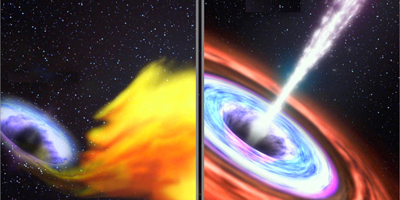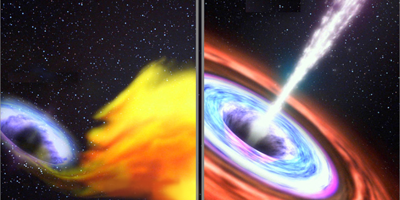Tidal Disruption of a Star
The cores of most galaxies are thought to harbor black holes with masses of a million or more suns. But many remain unseen until an unlucky star passes too close and is pulled apart by tidal forces. The stellar debris gathers into a disk and spirals towards the black hole in the center. As it does, it may form a jet of material that beams high-energy light like a flashlight. Last spring, the Swift satellite measured a flare of x rays and gamma rays from a distant galaxy that has the hallmarks of such a jet that happens to point right at us.
Long-lived jets may explain many bright astronomical objects, such as quasars, but astrophysicists still have much to learn about how the jets form. In Physical Review Letters, Nicholas Stone and Abraham Loeb, both at Harvard University, argue that last year’s flare gives an important clue. The tidal disruption should have quickly formed a disk in the plane of the original star’s motion, which in general will not be perpendicular to the black hole’s rotation axis. Stone and Loeb calculate that the dragging of the relativistic frame by the mass of the rotating black hole will cause the disk to precess like a wobbling top. If the jet direction were determined by the disk, it would have quickly pointed away from us. Instead, the flare lasted more than two weeks, suggesting that the jet was directed along the unchanging axis of rotation for the black hole. – Don Monroe





